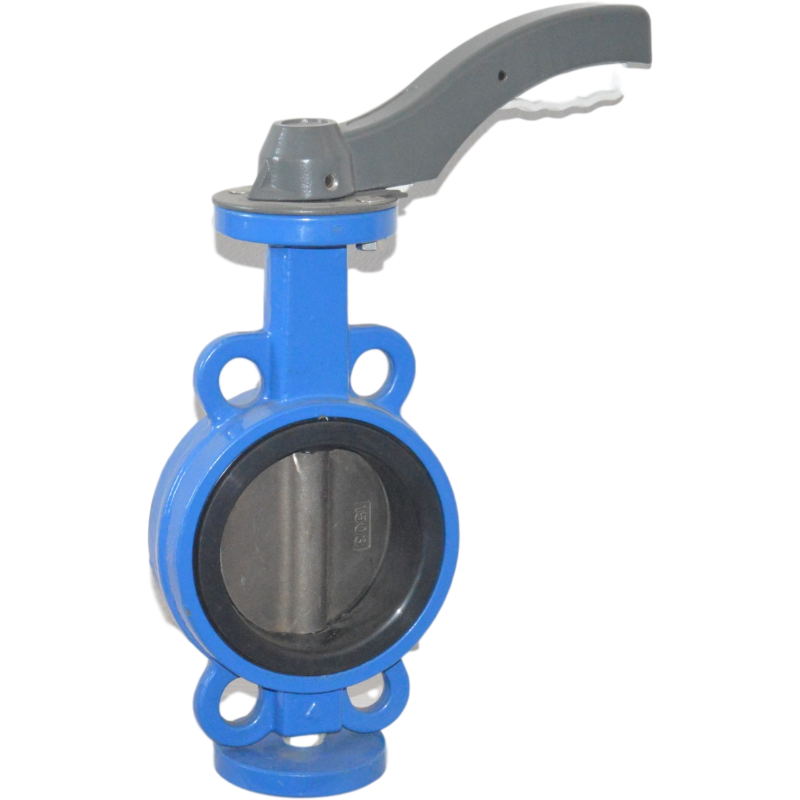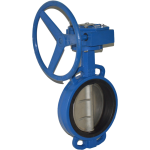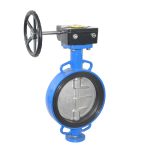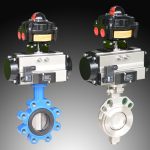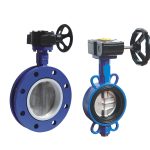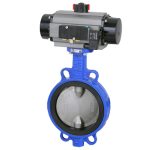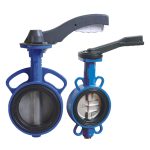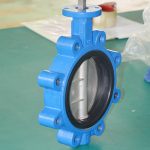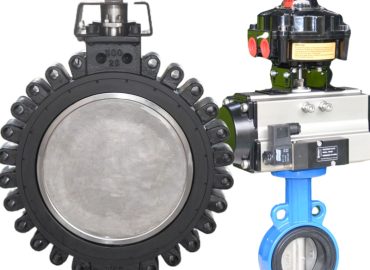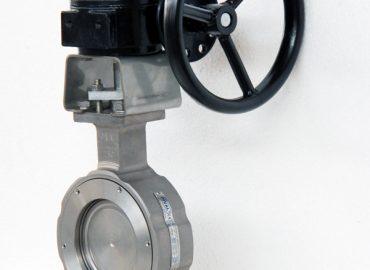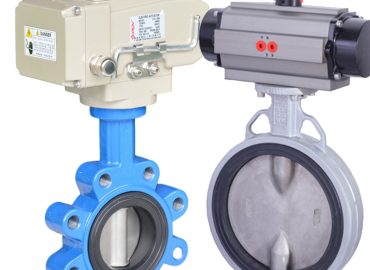The world of butterfly valves offers a variety of types, each with its unique features and applications. Among these, lugged and wafer butterfly valves are widely recognized for their distinct characteristics. While they might seem similar, there are substantial differences between them, especially in terms of installation. Understanding these differences is crucial for engineers and technicians who must choose the right valve for their specific system requirements. This article aims to shed light on the intricacies of installing lugged and wafer butterfly valves, highlighting how their installation procedures differ and the implications of these differences.
lugged vs wafer butterfly valve Introduction
Lugged vs wafer butterfly valve, two prominent types of butterfly valves, exhibit significant differences in their installation processes due to their unique design features. Wafer butterfly valves are named after their “wafer-thin” design, which is lightweight and compact, making them a cost-effective solution for systems where space is a constraint. They are installed by placing them between two pipeline flanges, and then the flanges are tightened together with bolts that squeeze the valve in place. This design, however, doesn’t allow for isolation, meaning if maintenance is required, the entire system needs to be shut down. On the other hand, lugged butterfly valves have threaded inserts at both ends, allowing them to be installed into a system with the use of two sets of bolts without nuts. The advantage here is that each side of the pipeline can be disconnected independently without causing disruption to the other side. This feature makes lugged butterfly valves an excellent choice for systems that require regular maintenance or need to accommodate changes in pressure or flow. Therefore, while wafer butterfly valves are ideal for compact systems that require minimal maintenance, lugged butterfly valves are better suited for larger, more complex systems where maintenance and system flexibility are key considerations.
Brief overview of butterfly valves
Butterfly valve are a type of quarter-turn valve that regulate the flow of a fluid. They consist of a disc mounted on a rotating shaft. When the valve is closed, the disc is turned to completely block off the passageway. When the valve is fully open, the disc is rotated a quarter turn to allow an almost unrestricted flow of the fluid. The valve may also be opened incrementally to throttle flow. There are different kinds of butterfly valves, each adapted for different pressures and usage. The zero offset butterfly valve, which has the lowest pressure rating, is generally used for applications requiring low pressure and temperature. The double offset butterfly valve, or high-performance butterfly valve, can bear up to 725 PSI pressure and 1200 degrees Fahrenheit. The triple offset butterfly valve, which is used in systems requiring higher pressures, can tolerate the highest pressures and temperatures. Butterfly valves are used in a variety of industries, from wastewater treatment plants to oil refineries, due to their reliability, long service life, and low maintenance requirements.
Explanation of the two types of butterfly valves: lugged and wafer
Lugged butterfly valve are two common types of butterfly valves, each with their unique characteristics and applications. A wafer butterfly valve, the more economical of the two, has a compact design and is typically sandwiched between two flanges using bolts that go through the flanges and into the valve. This type of valve is relatively lightweight and easy to install, but it needs to be removed entirely for maintenance as it doesn’t allow for pipeline isolation. Conversely, a lugged butterfly valve is characterized by its ‘lugs’ – threaded inserts located around the valve body’s outer edge. These lugs allow the valve to be installed into a system using two separate sets of bolts, meaning one side of the piping system can be disconnected without affecting the other side. This feature makes lugged butterfly valves ideal for systems that require regular maintenance or where pipeline isolation is necessary. While they are more robust and versatile than wafer butterfly valves, they are also generally more expensive due to their complex design.

Understanding Lugged Butterfly Valves
Lugged butterfly valve, as the name suggests, are characterized by the presence of ‘lugs’ or threaded inserts located around the valve body’s outer edge. These lugs, typically made of metal, provide a robust connection point for the attachment of separate bolts, which can be screwed directly into them. This design allows the valve to be securely mounted between two flanges in a piping system, with each flange having its own set of bolts. One of the key advantages of this design is that it allows for pipeline isolation. This means that one side of the piping system can be disconnected or removed for maintenance or replacement without needing to shut down the entire system. Additionally, since each side of the piping system has its own set of bolts, pressure changes or adjustments can be made on one side without affecting the other, offering greater flexibility and control. Lugged butterfly valves are typically used in systems where regular maintenance is required, or where the system needs to accommodate changes in pressure or flow. While they are more complex and generally more expensive than their wafer counterparts, their versatility and robustness make them a valuable component in many industrial applications. Their ability to withstand high pressure and temperature conditions also makes them suitable for use in demanding environments.
Detailed explanation of lugged butterfly valves
Lugged butterfly valves are a type of butterfly valve distinguished by their ‘lugs’ – threaded inserts located on the outer edge of the valve body. This design allows the valve to be installed using two separate sets of bolts that can be directly screwed into these lugs, attaching it securely between two flanges within a piping system. The lugs provide an important advantage: pipeline isolation, meaning that one side of the piping system can be disconnected or removed without affecting the other side. This is especially beneficial in systems requiring regular maintenance or in scenarios where one part of the system needs to be replaced. Furthermore, the independent bolt sets allow for adjustments in pressure or flow on one side without disrupting the other, providing greater operational flexibility. While typically more expensive due to their complex design, lugged butterfly valves are highly robust and versatile, making them a preferred choice in many industrial applications, particularly those needing to withstand high pressure and temperature conditions.
Characteristics and features of lugged butterfly valves
Lugged butterfly valves are characterized by their unique design features that contribute to their robustness and versatility. These valves are equipped with ‘lugs’ or metal inserts, threaded on the inside, which are strategically positioned around the valve’s outer edge. These lugs serve as connection points for bolts, allowing the valve to be securely installed between two flanges in a piping system. One of the key features of lugged butterfly valves is their capability for pipeline isolation – one side of the piping system can be disconnected without affecting the other side. This feature is particularly beneficial during maintenance or component replacement, minimizing disruption to the entire system. Another significant characteristic of lugged butterfly valves is their ability to handle changes in pressure or flow independently on each side of the system, providing greater control and flexibility. While these valves tend to be more complex and costly than other types of butterfly valves, their durability, operational flexibility, and capacity to withstand high pressure and temperature conditions make them an invaluable asset in many industrial applications.
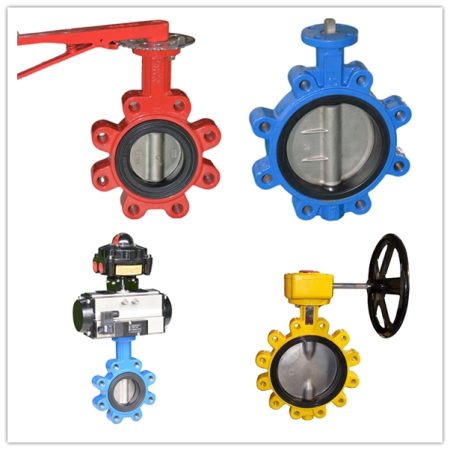
How lugged butterfly valves are installed
The installation of lugged butterfly valves involves a process that capitalizes on their unique design. First, the valve is positioned between two pipeline flanges. The lugs, or threaded inserts, located around the edge of the valve body are aligned with the holes in the flanges. Then, two separate sets of bolts are used to secure the valve in place. Each set of bolts is screwed directly into the lugs on one side of the valve, attaching it to the corresponding flange. This allows for a secure connection without the need for nuts on the backside of the flange. One key advantage of this installation method is that it allows for pipeline isolation; one side of the piping system can be disconnected without affecting the other side. This makes maintenance or component replacement much more convenient and less disruptive to the overall system. It’s important to note that the installation should be carried out carefully, following the manufacturer’s instructions, to ensure the valve functions correctly and safely.
Understanding Wafer Butterfly Valves
Wafer butterfly valve are a type of butterfly valve that is designed to be lightweight, economical, and easy to install. They are named ‘wafer’ due to their thin, wafer-like body that fits between two pipeline flanges. Unlike the lugged butterfly valve, the wafer style doesn’t have threaded inserts or ‘lugs’. Instead, long bolts, known as stud bolts, pass through the entire assembly – the flanges, the valve, and again through the flanges – and are secured with nuts on the opposite end. This design makes the wafer butterfly valve easier and quicker to install, reducing labor costs. However, it also means that the valve cannot be removed without disrupting the entire piping system, as it can’t isolate the flow of fluid on either side of it. Despite this limitation, wafer butterfly valves are highly efficient in controlling fluid flow and are widely used in large-scale industrial applications due to their cost-effectiveness and compact design. They are particularly suitable for systems where space is limited and where the pressure is relatively low. The wafer butterfly valve is a reliable, low-maintenance option that offers excellent throttling capabilities, making it a popular choice in industries such as water distribution, chemical processing, and HVAC systems.
Detailed explanation of wafer butterfly valves
Wafer butterfly valves are a specific type of butterfly valve recognized for their slim, compact design resembling a wafer. This design allows them to fit snugly between two pipeline flanges, secured in place by stud bolts that pass through the flanges and the valve itself. Unlike lugged butterfly valves, wafer valves don’t have threaded inserts or ‘lugs’, which means they cannot isolate the flow of fluid on either side. This implies that the entire system must be shut down if the valve needs to be serviced or removed. Despite this limitation, wafer butterfly valves are valued for their efficiency in controlling fluid flow and their easy installation process. They are generally more economical and lighter in weight than other types of butterfly valves, making them a cost-effective solution for many industrial applications. Furthermore, their compact design makes them an ideal choice for systems where space is limited, and their throttling capabilities are excellent. Wafer butterfly valves are commonly used in water distribution systems, chemical processing plants, and HVAC systems, among others.
Characteristics and features of wafer butterfly valves
Wafer butterfly valves are recognized for their distinctive characteristics and features that make them a popular choice in various industrial applications. One of their defining features is their thin, wafer-like structure, which allows them to fit between two flanges in a piping system. This compact design not only saves space but also makes them lighter and more economical than other types of butterfly valves. Unlike the lugged version, wafer butterfly valves do not have threaded inserts or ‘lugs’. Instead, they are held in place using stud bolts that pass through the entire assembly – the flanges, the valve, and then the flanges again. While this design simplifies installation and reduces costs, it does not allow for pipeline isolation, meaning the whole system must be shut down for maintenance or valve replacement. However, wafer butterfly valves are highly efficient in controlling fluid flow and offer excellent throttling capabilities. Their cost-effectiveness, combined with their performance and compact size, makes them an attractive option for industries such as water distribution, chemical processing, and HVAC systems.
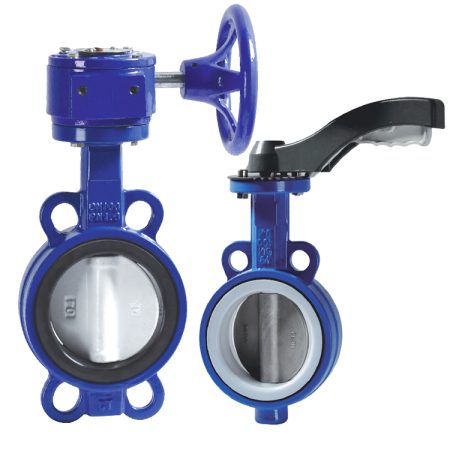
How wafer butterfly valves are installed
Installing a wafer pneumatic butterfly valve involves a process that takes advantage of its compact, wafer-like design. First, the valve is positioned between two pipeline flanges, aligning the holes in the valve with those in the flanges. Then, long bolts, known as stud bolts, are inserted through the holes in the flanges on one side, passing through the valve, and exiting through the holes in the flanges on the other side. The bolts are then secured with nuts on the opposite end. This method creates a sandwich-like assembly, with the wafer butterfly valve securely held in place between the two flanges. It’s worth noting that unlike lugged butterfly valves, wafer butterfly valves cannot isolate the flow on either side of the system. This means that the entire piping system needs to be shut down if the valve requires maintenance or replacement. Therefore, careful consideration should be given to the application and placement of wafer butterfly valves during the design phase of a system. As always, installation should be carried out in accordance with the manufacturer’s instructions to ensure optimal performance and safety.
Comparing the Installation Process
Comparing the installation process of lugged and wafer butterfly valves reveals some key differences that could influence their selection based on the specific requirements of a piping system. Both types of valves are designed to fit between two flanges in a piping system, but the method of securing them in place varies. Lugged butterfly valves are equipped with ‘lugs’ or metal inserts around the valve’s outer edge. These lugs align with the holes in the flanges and are bolted directly to each flange, allowing for a secure connection without the need for nuts on the backside of the flange. This design allows for pipeline isolation, meaning one side of the piping system can be disconnected without affecting the other side. This feature is particularly beneficial during maintenance or component replacement. On the other hand, wafer butterfly valves have a simpler design. They are held in place using stud bolts that pass through the entire assembly – the flanges, the valve, and then the flanges again. This streamlined design makes them easier to install and more cost-effective. However, they do not allow for pipeline isolation, meaning the entire system must be shut down for valve servicing or replacement. Therefore, when choosing between a lugged and wafer butterfly valve, one must consider the specific needs of the system, including factors like ease of installation, cost, maintenance requirements, and the need for pipeline isolation.
Comparison of the installation process for lugged vs wafer butterfly valve
The installation processes for lugged vs wafer butterfly valve are different and each has its advantages and disadvantages. A lugged butterfly valve is installed by aligning its threaded inserts, or ‘lugs’, with the holes in two pipeline flanges. These lugs are then bolted directly to each flange, creating a secure connection that allows for pipeline isolation. This means that one side of the system can be disconnected without affecting the other, which can be particularly beneficial during maintenance or replacement tasks. On the other hand, a wafer butterfly valve is installed by positioning it between two flanges and securing it with stud bolts that pass through the entire assembly – the flanges, the valve, and then the flanges again. Although this method is simpler and more cost-effective, it doesn’t allow for pipeline isolation. Therefore, the entire system must be shut down if the valve needs to be serviced or replaced. The choice between these two types of valves will depend on the specific requirements of the piping system, including factors such as installation cost, maintenance needs, and the necessity for pipeline isolation.
Factors to consider when choosing between lugged vs wafer butterfly valve for installation
When choosing between lugged vs wafer butterfly valve for installation, several factors must be taken into account. The first consideration should be the specific requirements of your piping system. If pipeline isolation is necessary, meaning one side of the system needs to be able to operate while the other is shut off for maintenance or replacement, a lugged butterfly valve would be the better choice due to its threaded inserts or ‘lugs’. However, if pipeline isolation is not a critical factor, the wafer butterfly valve’s simpler and more cost-effective installation process might be more appealing. Another consideration is the available space. Wafer butterfly valves have a compact design that makes them ideal for systems where space is limited. Lastly, consider the operating conditions, such as pressure and temperature, as different types of valves may perform better under certain conditions. Always refer to the manufacturer’s specifications and guidelines when choosing a valve, and consult with a professional if you’re unsure.

Advantages and Disadvantages of Each Type
Both lugged vs wafer butterfly valve offer their unique advantages and disadvantages, making them suitable for different applications. Starting with lugged butterfly valves, one of their significant advantages is the ability to provide pipeline isolation. Since they have threaded inserts or ‘lugs’, they can be bolted directly to each flange, allowing one side of the piping system to be disconnected without affecting the other. This feature is beneficial during maintenance or replacement tasks, as it reduces downtime. However, lugged butterfly valves are generally more expensive and heavier than wafer butterfly valves due to their more complex design and construction, which could be a disadvantage in cost-sensitive projects or systems that require lightweight components.
On the other hand, wafer butterfly valves are known for their simplicity and cost-effectiveness. Their compact, wafer-like design makes them lighter and easier to install, which can result in lower labor costs. They’re also generally less expensive than lugged butterfly valves, making them a cost-effective choice for many applications. However, unlike lugged butterfly valves, wafer butterfly valves don’t allow for pipeline isolation. This means that the entire system must be shut down for valve servicing or replacement, which could lead to increased downtime. Moreover, their lightweight design might not be as robust as the lugged version under certain operating conditions.
Therefore, when selecting between these two types of valves, it’s essential to carefully consider the specific needs and constraints of your system, including factors like cost, installation complexity, maintenance requirements, and the need for pipeline isolation. It’s always advisable to consult with a professional or refer to the manufacturer’s guidelines to ensure the chosen valve meets the system’s technical specifications and performance expectations.
Discussion of the advantages and disadvantages of each type of butterfly valve in terms of installation
When discussing the advantages and disadvantages of lugged vs wafer butterfly valve in terms of installation, it’s clear that each type has its unique characteristics. Lugged butterfly valves, with their ‘lugs’ or threaded inserts, allow for a secure connection to each flange. This design enables pipeline isolation, meaning one side of the system can be disconnected without disrupting the other, a significant advantage during maintenance or replacement tasks. However, this feature also makes the installation process of lugged butterfly valves more complex and time-consuming, which could be seen as a disadvantage, especially in projects with tight timelines.
On the other hand, wafer butterfly valves are known for their simplicity and ease of installation. Their compact design allows them to be held in place using stud bolts that pass through the entire assembly – the flanges, the valve, and then the flanges again. This streamlined installation process can save time and labor costs, making wafer butterfly valves a cost-effective choice. However, their major disadvantage is the lack of pipeline isolation. If the valve needs to be serviced or replaced, the entire system must be shut down, potentially leading to increased downtime. Therefore, when choosing between these two types of valves, the specific needs and constraints of the project, including installation cost, complexity, and the need for pipeline isolation, should be carefully considered.
Consideration of the applications best suited for each type
When considering the applications best suited for lugged and wafer butterfly valves, it’s crucial to take into account their unique features and capabilities. Lugged butterfly valves, with their ability to provide pipeline isolation, are ideal for systems that require regular maintenance or component replacement. They allow one side of the system to be disconnected without disrupting the other, reducing downtime and enhancing system efficiency. This makes them a great fit for complex industrial applications where operational continuity is vital.
On the other hand, wafer butterfly valves, with their simple and compact design, are well-suited for applications where space is limited or where cost and ease of installation are primary considerations. Their streamlined installation process can save time and labor costs, making them a cost-effective choice for many systems. However, since they don’t allow for pipeline isolation, they’re best used in systems where shutdowns for maintenance or replacements won’t significantly impact operations. This makes them suitable for less complex systems or those that can afford occasional shutdowns. Therefore, the selection between these two types of valves should be based on the specific needs and constraints of the application, ensuring optimal performance and efficiency.
lugged vs wafer butterfly valve Conclusion
In conclusion, the key differences in the installation processes of lugged and wafer butterfly valves lie in their unique designs and capabilities. Lugged butterfly valves, characterized by their ‘lugs’ or threaded inserts, offer a secure connection to each flange in a piping system. Their design allows for pipeline isolation, a valuable feature that lets one side of the system be disconnected for maintenance or replacement without impacting the other. This feature can significantly reduce downtime, making lugged butterfly valves an excellent choice for complex industrial applications where operational continuity is crucial. However, this benefit comes with increased complexity and time requirements in the installation process, which may not be ideal for all projects.
On the flip side, wafer butterfly valves stand out for their simplicity and cost-effectiveness. Their compact design enables a streamlined installation process, potentially saving time and labor costs. They are held in place using stud bolts that pass through the entire assembly, including the flanges and the valve itself. While this design makes wafer butterfly valves a cost-effective solution for many systems, it does not allow for pipeline isolation. This means that if the valve needs to be serviced or replaced, the entire system must be shut down, potentially leading to increased downtime. Therefore, they are best suited for less complex systems or those that can afford occasional shutdowns.
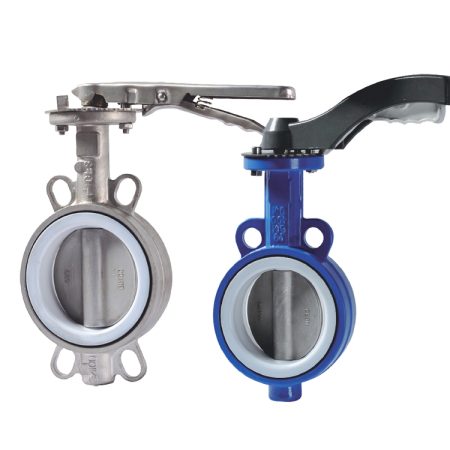
Choosing between these two types of butterfly valves requires a careful evaluation of the specific needs and constraints of your project. Factors such as installation cost, complexity, maintenance needs, space constraints, and the necessity for pipeline isolation should be considered. It’s always advisable to consult with a professional or refer to the manufacturer’s guidelines to ensure the chosen valve meets the technical specifications and performance expectations of your system. Ultimately, understanding the differences between lugged and wafer butterfly valves can help you make an informed decision that enhances the efficiency and reliability of your piping system.
Recap of the key differences between lugged vs wafer butterfly valve in terms of installation
In terms of installation, the key differences between lugged vs wafer butterfly valve lie in their design and functionality. Lugged butterfly valves are characterized by their ‘lugs’ or threaded inserts, which allow them to be bolted directly to each flange of a piping system. This design allows for pipeline isolation, meaning one side of the system can be disconnected without disrupting the other – a significant advantage during maintenance or replacement tasks. However, this feature also makes the installation process more complex and time-consuming. On the other hand, wafer butterfly valves have a simpler design that allows for easy installation. They’re held in place using stud bolts that pass through the entire assembly, including the flanges and the valve itself. While this streamlined installation process can save time and labor costs, it does not allow for pipeline isolation. If the valve needs to be serviced or replaced, the entire system must be shut down, potentially leading to increased downtime. These fundamental differences should be carefully considered when choosing the appropriate valve for your project.


